Economic and Social Development

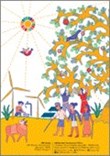
 14.45 (Mb)
232 pages
14.45 (Mb)
232 pages
Government of India: United Nations Sustainable Development Cooperation Framework 2023-2027
GoI-UNSDCF 2023-2027 represents the UN development system’s collective offer to the Government of India, in line with the national vision for development, for the achievement of the Sustainable Development Goals, promoting gender equality, youth empowerment and human rights. The United Nations General Assembly Resolution A/RES/72/279 designates the United Nations Sustainable Development Cooperation Framework as the principal planning and implementation instrument for the UN Development System at country level. Programme priorities of the UN entities working at the country are derived from the GoI-UNSDCF.
More
Complete Details
Source/Issuing Agency:GOI,UNRCO
Imprint:
New Delhi, United Nations Resident Coordinator's Office, Government of India, 08 January 2024
Keywords:
SDG's; COVID-19
Language:
English
Resource Type:
Report
|
Nutrition and Food Security

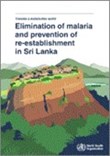
 0 pages
0 pages
Compendium of Forgotten Foods in Africa: A Companion Publication for Integrating Africa's Forgotten Foods for Better Nutrition
The World Wide Fund for Nature defines a food system as “the complete set of people, institutions, activities, processes, and infrastructure involved in producing and consuming food for a given population.” (WWF, 2017). The food system has a bearing on human capital development, provision of jobs, industrial growth, structural transformation and ecosystem services. As in many other parts of the world, the landscape of African food systems is fraught with fragility and fails to deliver on these key developmental outcomes. Transforming food systems in Africa is an imperative for the realization of the UN’s Sustainable Development Goals, which now has a delivery timeline of less than a decade. A sustainability framework must underguard any attempts at food systems transformations. For example, Africa must provide food and nutrition security to its rapidly expanding population in perpetuity without engendering adverse environmental, social and economic externalities. The massive endowment of the continent with extensive arable land and diverse agro-ecosystems teeming with rich flora makes sustainable food systems a realizable dream. Indeed, Indigenous communities across Africa have used a number of locally adapted crops for millennia mainly for nutrition, medicinal and ornamental purposes. Unfortunately, many of these crops, have been progressively substituted with imported genotypes favoured by industrial agriculture. Pervasive monoculture of the exotic crops and increasingly standardized diets have contributed in part to utter denigration of the indigenous crops, earning them the appellation of "forgotten crops.”
More
Complete Details
Source/Issuing Agency:FAO
Imprint:
Rome, Food and Agriculture Organization of the United Nations, 2024
ISBN:978-92-5-137756-7
Language:
Resource Type:
Publication
|
Information Technology and Communication

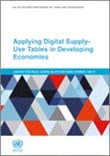
 1.30 (Mb)
35 pages
1.30 (Mb)
35 pages
Applying Digital Supply-use Tables in Developing Economies
Digitally focused indicators are absent within the System of National Accounts, the standard statistical framework for measuring economic activity. The Digital Supply–Use Tables (Digital SUTs) framework was created to improve the visibility of and information available on digital phenomena while being consistent with the existing national account statistics. The framework has been designed as a derivation from the Supply-Use Tables (SUTs). However, SUTs are not available in many developing countries and often come infrequently with significant time lags. This technical note looks at how countries with SUTs can take steps to begin applying the Digital SUTs framework, and how the fundamental principles and approaches set out in the Digital SUTs framework can be applied to key national accounts aggregates that are more widely available in developing countries, without requiring full SUTs.
It points to actions that countries with a limited statistical basis to work from can take to begin compiling Digital SUTs or key indicators following the principles of the framework.
More
Complete Details
Source/Issuing Agency:UNCTAD
Imprint:
Geneva, United Nations Conference on Trade and Development, 2024
Keywords:
Digital Economy; COVID-19; ICT Goods
Symbol:
UNCTAD/TCS/DTL/INF/2024/1
Language:
English
Resource Type:
Publication
|
International Trade and Finance

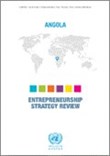
 692.07 (Kb)
26 pages
692.07 (Kb)
26 pages
Angola: Entrepreneurship Policy Review
This document on priority interventions is in line with Angola 2050 strategy that provides a long-term vision of the country’s future, including its insertion in the international context over the next decades, and the country’s National Development Plan 2023-2027. It should be read in conjunction with the Mapping and assessment report of the entrepreneurial ecosystem in Angola dated 2020 and the Report on the multi stakeholder dialogue of the elaboration of the national entrepreneurship policy of 2023, available respectively in Annexes III and IV. It can be used as a basis for continued national consultations.
More
Complete Details
Source/Issuing Agency:UNCTAD
Imprint:
Geneva, United Nations Conference on Trade and Development, 2024
Keywords:
Entrepreneurship
Symbol:
UNCTAD/TCS/DIAE/INF/2024/1
Language:
English
Resource Type:
Publication
|
United Nations


 25.22 (Mb)
21 pages
25.22 (Mb)
21 pages
United Nations Development Programme: Annual Report 2023
Complete Details
Source/Issuing Agency:UNDP
Imprint:
New York, United Nations Development Programme, 2024
Language:
English
Resource Type:
Publication
|
Culture and Heritage

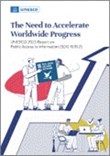
 1.86 (Mb)
41 pages
1.86 (Mb)
41 pages
The Need to Accelerate World wide Progress: UNESCO 2023 Report on Public Access to Information SDG
As the UN custodian agency for Sustainable Development Goals (SDG) Indicator 16.10.2, UNESCO continues to report on progress in the adoption and implementation of Access to Information guarantees. The 2023 edition provides information on the relevance of access to information as a pillar of sustainable development and the use of new technologies to advance the right to information. It also focuses on national and regional good practices, concentrating on the recent developments in Africa in general and in Namibia, in particular, which was the latest country in Africa to adopt an Access to Information law. ‘The need to accelerate worldwide progress’ presents key findings from the 2023 UNESCO Survey on Public Access to Information, assessing progress in 126 participating countries and territories. It equips policymakers, civil society, academia and those interested in SDG issues with case studies and good practices, concentrating on reinforcing communities and public institutions with more access to information.
More
Complete Details
Source/Issuing Agency:IPDC,UNESCO
Imprint:
Paris, United Nations Educational, Scientific and Cultural Organization, International Programme for the Development of Communication, 2024
ISBN:978-92-3-100667-8
Keywords:
SDG
Language:
English
Resource Type:
Report
|
Public Health

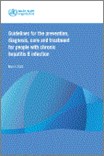
 1.85 (Mb)
272 pages
1.85 (Mb)
272 pages
Guidelines for the Prevention Diagnosis Care and Treatment for People with Chronic Hepatitis B Infection
Hepatitis B (HBV) infection is a major public health problem and cause of chronic liver disease. The 2024 HBV guidelines provide updated evidence-informed recommendations on key priority topics. These include expanded and simplified treatment criteria for adults but now also for adolescents; expanded eligibility for antiviral prophylaxis for pregnant women to prevent mother-to-child transmission of HBV; improving HBV diagnostics through use of point-of-care HBV DNA viral load and reflex approaches to HBV DNA testing; who to test and how to test for HDV infection; and approaches to promote delivery of high-quality HBV services, including strategies to promote adherence to long-term antiviral therapy and retention in care. The 2024 guidelines include 11 updated chapters with new recommendations and also update existing chapters without new recommendations, such as those on treatment monitoring and surveillance for liver cancer.
More
Complete Details
Source/Issuing Agency:WHO
Imprint:
Geneva, World Health Organization, 2024
ISBN:978-92-4-009090-3
eISBN:978-92-4-009091-0
Keywords:
COVID-19
Language:
English
Resource Type:
Report
|
Public Health

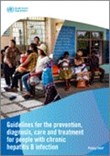
 1.61 (Mb)
28 pages
1.61 (Mb)
28 pages
Policy Brief: Guidelines for the Prevention Diagnosis Care and Treatment for People with Chronic Hepatitis B Infection
This policy brief provides an overview and the summary of recommendations of the new 2024 Guidelines for the prevention, diagnosis, care and treatment for people with chronic hepatitis B infection. These guidelines provide a substantial simplification and expansion of eligibility for treatment to overcome barriers in access to hepatitis B testing and treatment.
Complete Details
Source/Issuing Agency:WHO
Imprint:
Geneva, World Health Organization, 2024
ISBN:978-92-4-009136-8
eISBN:978-92-4-009137-5
Keywords:
Global HIV
Language:
English
Resource Type:
Publication
|
Natural Resources Water and Energy

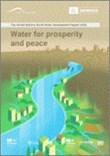
 6.37 (Mb)
176 pages
6.37 (Mb)
176 pages
The United Nations World Water Development Report 2024: Water for Prosperity and Peace
Water nurtures prosperity by meeting basic human needs, supporting health and livelihoods and economic development, underpinning food and energy security, and defending environmental integrity. The impacts of climate change, geopolitical unrest, pandemics, mass migration, hyperinflation and other crises can exacerbate water access inequalities. In nearly all cases, the poorest and most vulnerable groups are those that suffer the greatest risks to their well-being and livelihoods. The 2024 edition of the United Nations World Water Development Report (UN WWDR) describes how developing and maintaining a secure and equitable water future underpins prosperity and peace for all. It calls attention to the complex and interlinked relationships between water, prosperity and peace, describing how progress in one dimension can have positive, often essential, repercussions on the others. Water infrastructure promotes growth and prosperity by storing a reliable water supply and delivering it to economic sectors, including agriculture, industry, energy and the relevant business and service sectors that support billions of livelihoods. Similarly, safe, accessible and well-functioning drinking water and sanitation systems foster prosperity through quality of life, greater education opportunities and a healthy workforce. Cooperation over water resources has generated positive and peaceful outcomes, ranging from participatory, community-led initiatives that have relieved local tensions, to dispute settlement and peacebuilding in post-conflict settings and transboundary watersheds. However, inequalities in the allocation of water resources, in access to water supply and sanitation services, and in the distribution of social, economic and environmental benefits can be counterproductive to peace and social stability. The UN WWDR is UN-Water’s flagship report on water and sanitation issues, focusing on a different theme each year. The report is published by UNESCO, on behalf of UN-Water and its production is coordinated by the UNESCO World Water Assessment Programme. The report gives insight on main trends concerning the state, use and management of freshwater and sanitation, based on work done by Members and Partners of UN-Water. Launched in conjunction with World Water Day, the report provides decision-makers with knowledge and tools to formulate and implement sustainable water policies. It also offers best practices and in-depth analyses to stimulate ideas and actions for better stewardship in the water sector and beyond.
More
Complete Details
Source/Issuing Agency:UN-WWDR,UNESCO
Imprint:
Paris, United Nations Educational, Scientific and Cultural Organization, United Nations World Water Development Report, 2024
ISBN:978-92-3-100657-9
Keywords:
Climate Change; Wastewater; COVID-19; SDGs
Language:
English
Resource Type:
Report
|
Public Health

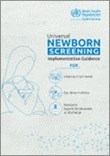
 5.60 (Mb)
70 pages
5.60 (Mb)
70 pages
Universal Newborn Screening: Implementation Guidance
In 2022, the World Health Organization (WHO) released updated postnatal care guidelines “Recommendations on maternal and newborn care for a positive postnatal experience”. For the first time, WHO addressed the aspects of discharge readiness, discharge preparation, and universal screening of newborns as part of the updated guidance.
Complete Details
Source/Issuing Agency:WHO
Imprint:
Geneva, World Health Organization, 2024
ISBN:978-92-9021-128-0
Language:
English
Resource Type:
Publication
|